N1 Flight #4
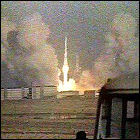 The Soviet space program, still determined to reach the moon, again loads an unmanned Soyuz/Korabl capsule and lander combo onto the huge N1 rocket for another test launch. At an altitude of nearly 25 miles, the N1 experiences severe structural stresses and disintegrates in mid-air, effectively ending the Soviet drive for the moon. Another N1 is prepared for another launch, with an eye toward orbiting a massive space station with which to upstage the upcoming American Skylab station, only to be dismantled on the ground in favor of more reliable launch vehicles.
The Soviet space program, still determined to reach the moon, again loads an unmanned Soyuz/Korabl capsule and lander combo onto the huge N1 rocket for another test launch. At an altitude of nearly 25 miles, the N1 experiences severe structural stresses and disintegrates in mid-air, effectively ending the Soviet drive for the moon. Another N1 is prepared for another launch, with an eye toward orbiting a massive space station with which to upstage the upcoming American Skylab station, only to be dismantled on the ground in favor of more reliable launch vehicles.
N1 Flight #3
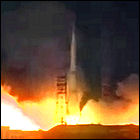 Though the race to the moon has already been lost, the Soviet space program continues to refine its giant N1 rocket, conducting extensive modifications to nearly all of its systems. The third N1 to lift off almost immediately loses directional control, forcing ground controllers to signal it to self-destruct less than a mile off the ground. Its cargo is an unmanned Soyuz/Korabl combo – the Soviet answer to the Apollo command/service module and landing module – though this time there is no launch escape system, so the vehicle is destroyed along with its booster.
Though the race to the moon has already been lost, the Soviet space program continues to refine its giant N1 rocket, conducting extensive modifications to nearly all of its systems. The third N1 to lift off almost immediately loses directional control, forcing ground controllers to signal it to self-destruct less than a mile off the ground. Its cargo is an unmanned Soyuz/Korabl combo – the Soviet answer to the Apollo command/service module and landing module – though this time there is no launch escape system, so the vehicle is destroyed along with its booster.
Zond 8
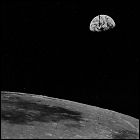 The Soviet Union launches Zond 8, the final Zond flight and the final flight of the Soyuz 7K-L1 capsule which was intended to be the command & service module of the Soviet manned lunar effort. Again, the vehicle orbits the moon and returns to Earth unmanned after a week in space. For only the second time, the 7K-L1 vehicle performs every phase of the flight flawlessly – though the Soviet Union, trying to downplay the space race, now retroactively denies that it was ever interested in sending men to the moon.
The Soviet Union launches Zond 8, the final Zond flight and the final flight of the Soyuz 7K-L1 capsule which was intended to be the command & service module of the Soviet manned lunar effort. Again, the vehicle orbits the moon and returns to Earth unmanned after a week in space. For only the second time, the 7K-L1 vehicle performs every phase of the flight flawlessly – though the Soviet Union, trying to downplay the space race, now retroactively denies that it was ever interested in sending men to the moon.
Zond 7
 The Soviet Union launches the Zond 7 unmanned spacecraft, an unmanned version of the Soyuz 7K-L1 space vehicle intended to take cosmonauts around the moon. Carrying no crew, this vehicle takes pictures and tests various spacecraft systems without risking human lives. Zond 7 returns to Earth using an unusual multiple-skip atmospheric re-entry profile on August 14th. If Zond 7 had been carrying a crew, this would have been the first nominal flight of the Soyuz 7K-L1 vehicle. No cosmonaut crews would reach the moon prior to the dissolution of the Soviet Union in the late 20th century.
The Soviet Union launches the Zond 7 unmanned spacecraft, an unmanned version of the Soyuz 7K-L1 space vehicle intended to take cosmonauts around the moon. Carrying no crew, this vehicle takes pictures and tests various spacecraft systems without risking human lives. Zond 7 returns to Earth using an unusual multiple-skip atmospheric re-entry profile on August 14th. If Zond 7 had been carrying a crew, this would have been the first nominal flight of the Soyuz 7K-L1 vehicle. No cosmonaut crews would reach the moon prior to the dissolution of the Soviet Union in the late 20th century.
N1 Flight #2
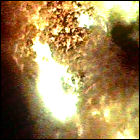 The Soviet Union’s second attempt to launch its moon rocket, the huge N1, ends disastrously. Again carrying an unmanned Zond spacecraft, the N1 barely clears the tower before stalling. Still full of highly flammable fuel, the N1 drops back to the ground, resulting in one of the most powerful man-made, non-nuclear explosions in history, completely wiping its launch tower and adjacent buildings off the map. (The Zond probe is lifted clear of the explosion by its escape rockets.) American spy satellites spot the damage to the nearby landscape from the explosion, tipping off the rest of the world to the N1 rocket program.
The Soviet Union’s second attempt to launch its moon rocket, the huge N1, ends disastrously. Again carrying an unmanned Zond spacecraft, the N1 barely clears the tower before stalling. Still full of highly flammable fuel, the N1 drops back to the ground, resulting in one of the most powerful man-made, non-nuclear explosions in history, completely wiping its launch tower and adjacent buildings off the map. (The Zond probe is lifted clear of the explosion by its escape rockets.) American spy satellites spot the damage to the nearby landscape from the explosion, tipping off the rest of the world to the N1 rocket program.
N1 Flight #1
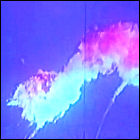 The gigantic Soviet-made N1 rocket, Sergei Korolev’s answer to the American Saturn V launcher, lifts off for the first time with an unmanned Zond spacecraft intended for a lunar flyby. Barely 70 seconds after leaving the pad, the N1 explodes at an altitude of seven miles, but the Zond space probe is salvaged by its escape tower rockets. The Soviet Union is no closer to safely sending a crew of cosmonauts to the moon.
The gigantic Soviet-made N1 rocket, Sergei Korolev’s answer to the American Saturn V launcher, lifts off for the first time with an unmanned Zond spacecraft intended for a lunar flyby. Barely 70 seconds after leaving the pad, the N1 explodes at an altitude of seven miles, but the Zond space probe is salvaged by its escape tower rockets. The Soviet Union is no closer to safely sending a crew of cosmonauts to the moon.
Zond 6
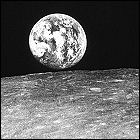 The Soviet Union launches an unmanned Soyuz 7K-L1 spacecraft, designated Zond 6, on a seven-day flight around the moon and back to Earth. Like Zond 5 before it, Zond 6 carries specimens of Earth animals and plants, but a rupture of the Soyuz pressure vessel results in these specimens being exposed to hard vacuum, resulting in instant death. Furthermore, the spacecraft opens and jettisons its parachutes too early, leaving it to slam into the ground at high speed. With continued glitches plaguing the Zond flights, Soviet mission planners aren’t confident enough in the 7K-L1 capsule to put cosmonauts in it for the next flight.
The Soviet Union launches an unmanned Soyuz 7K-L1 spacecraft, designated Zond 6, on a seven-day flight around the moon and back to Earth. Like Zond 5 before it, Zond 6 carries specimens of Earth animals and plants, but a rupture of the Soyuz pressure vessel results in these specimens being exposed to hard vacuum, resulting in instant death. Furthermore, the spacecraft opens and jettisons its parachutes too early, leaving it to slam into the ground at high speed. With continued glitches plaguing the Zond flights, Soviet mission planners aren’t confident enough in the 7K-L1 capsule to put cosmonauts in it for the next flight.
Zond 5
 The Soviet Union launches Zond 5, a Soyuz 7K-L1 command & service module intended for flight around the moon. Rather than a cosmonaut crew, however, Zond 5 has biological specimens on board, including insects, plants, bacteria, and a pair of turtles – the first living creatures from Earth to orbit the moon. The specimens are all returned safely, though Zond 5 is the second consecutive Zond flight to lose attitude control after re-entry, splashing down in the Indian Ocean rather than making the customary propulsive return to Soviet soil. American intelligence agencies are aware of the mostly successful flight, and NASA alters the Apollo manned flight schedule to attempt to put men in orbit of the moon by the end of 1968.
The Soviet Union launches Zond 5, a Soyuz 7K-L1 command & service module intended for flight around the moon. Rather than a cosmonaut crew, however, Zond 5 has biological specimens on board, including insects, plants, bacteria, and a pair of turtles – the first living creatures from Earth to orbit the moon. The specimens are all returned safely, though Zond 5 is the second consecutive Zond flight to lose attitude control after re-entry, splashing down in the Indian Ocean rather than making the customary propulsive return to Soviet soil. American intelligence agencies are aware of the mostly successful flight, and NASA alters the Apollo manned flight schedule to attempt to put men in orbit of the moon by the end of 1968.
Zond 4
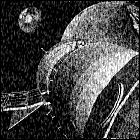 The Soviet Union launches an unmanned test flight of the Soyuz 7K-L1 command/service module, a spacecraft intended to orbit the moon with cosmonauts aboard. This unmanned flight, however, is designated Zond 4, and on its way back into Earth’s atmosphere it loses attitude control. With no precision guidance to ensure that Zond 4 will land on Soviet soil, Russian space authorities command the vehicle to self-destruct in mid-air to prevent their space technology from falling into another country’s hands. (The image accompanying this historical entry is computer-generated, and not a real photo.)
The Soviet Union launches an unmanned test flight of the Soyuz 7K-L1 command/service module, a spacecraft intended to orbit the moon with cosmonauts aboard. This unmanned flight, however, is designated Zond 4, and on its way back into Earth’s atmosphere it loses attitude control. With no precision guidance to ensure that Zond 4 will land on Soviet soil, Russian space authorities command the vehicle to self-destruct in mid-air to prevent their space technology from falling into another country’s hands. (The image accompanying this historical entry is computer-generated, and not a real photo.)
Zond 3
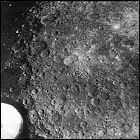 The Soviet Union launches Zond 3, an unmanned spacecraft nearly identical to the failed Mars-bound space probe Zond 2, on a trajectory that will swing past the moon on its way to interplanetary space. It would make its closest flyby to the moon on July 20th, 1965, four years to the day prior to the first manned lunar landing, taking photos of the far side of the moon as it heads into deep space. Zond 3 proceeds on a trajectory toward the orbit of Mars, even though it will be too far away from the planet to study it.
The Soviet Union launches Zond 3, an unmanned spacecraft nearly identical to the failed Mars-bound space probe Zond 2, on a trajectory that will swing past the moon on its way to interplanetary space. It would make its closest flyby to the moon on July 20th, 1965, four years to the day prior to the first manned lunar landing, taking photos of the far side of the moon as it heads into deep space. Zond 3 proceeds on a trajectory toward the orbit of Mars, even though it will be too far away from the planet to study it.
Zond 2
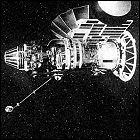 The Soviet Union launches the unmanned space probe Zond 2, intended to conduct the first close flyby of the planet Mars. Interplanetary exploration is still in its infancy, however, and just as Zond 1 failed mere weeks away from Venus, communication is lost with Zond 2 three months prior to its planned August 1965 encounter with the red planet. A backup of this spacecraft, Zond 3, will be launched in 1965, also failing to reach Mars but instead returning photos of Earth’s moon.
The Soviet Union launches the unmanned space probe Zond 2, intended to conduct the first close flyby of the planet Mars. Interplanetary exploration is still in its infancy, however, and just as Zond 1 failed mere weeks away from Venus, communication is lost with Zond 2 three months prior to its planned August 1965 encounter with the red planet. A backup of this spacecraft, Zond 3, will be launched in 1965, also failing to reach Mars but instead returning photos of Earth’s moon.
Zond 1
 The Soviet Union launches the space probe Zond 1 toward Venus, a more sophisticated version of the Venera 1 vehicle sent to that planet in 1961. Thanks to an electrical short within the Zond space probe, ground controllers lose all contact a month after it leaves Earth; by the time it swings past Venus at over 60,000 miles months later, Zond 1 has shut down completely.
The Soviet Union launches the space probe Zond 1 toward Venus, a more sophisticated version of the Venera 1 vehicle sent to that planet in 1961. Thanks to an electrical short within the Zond space probe, ground controllers lose all contact a month after it leaves Earth; by the time it swings past Venus at over 60,000 miles months later, Zond 1 has shut down completely.